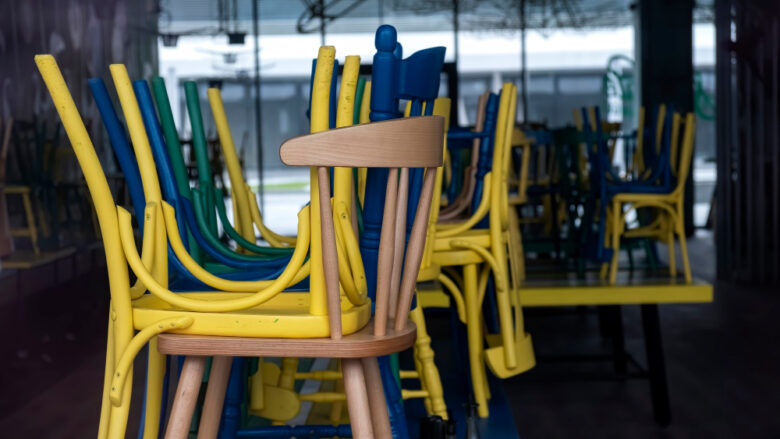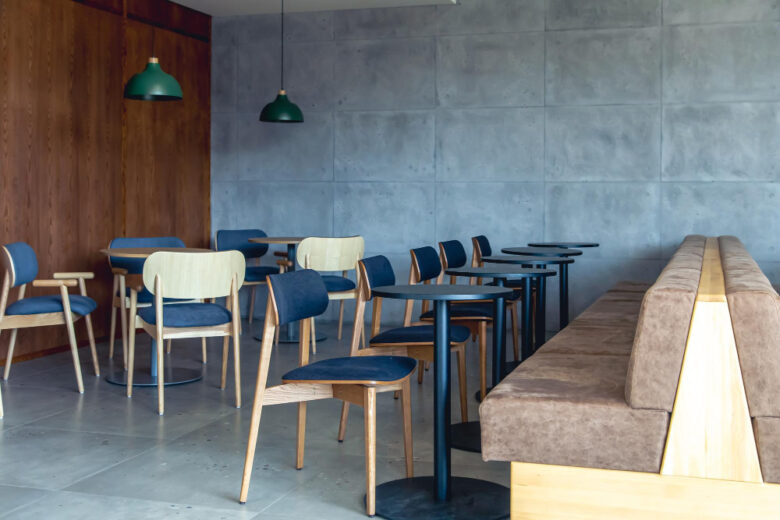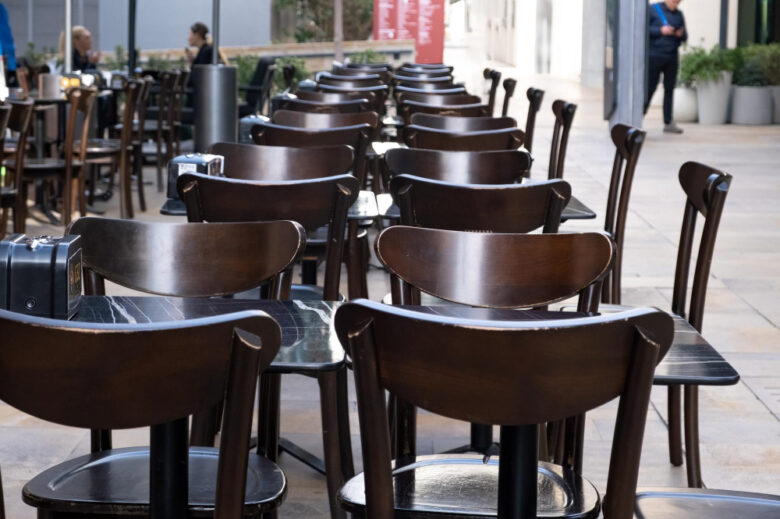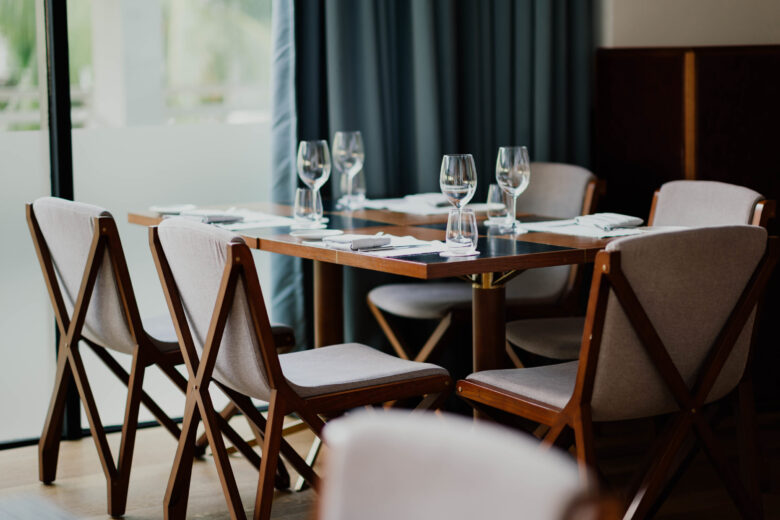The whole dining experience is greatly influenced by the art and science of restaurant chairs, which combine style and usefulness to produce a pleasing ambiance. These modest pieces of furniture add to the restaurant’s atmosphere, coziness, and general design, in addition to serving as a place for customers to sit. They are a reflection of the restaurant’s identity.
When it comes to restaurant design, selecting chairs requires excellent thought to ensure that they complement the theme, idea, and brand identification. The chair’s style must blend in perfectly with the entire interior design concept, enhancing the materials, color scheme, and architectural features that have been selected. For instance, a chic, contemporary restaurant would choose sleek, simple chair designs, while a rustic restaurant might favor stronger, wooden ones. The choice of upholstery—leather, cloth, or a mix of materials—adds another level of artistic expression and enables personalization to fit the distinct character of the restaurant.

Source: freepik.com
Beyond design, the science of restaurant chairs explores the ergonomic elements that have a direct bearing on patron comfort and well-being. Chairs need to be made with the human body’s needs for support in mind, taking into account things like posture, weight distribution, and ease of mobility. Because they allow diners to enjoy their meals without discomfort or interruption, ergonomically designed seats enhance the dining experience. The padding, backrest angle, and chair height all have a significant impact on whether or not diners can sit for prolonged periods without becoming tired.
Another crucial scientific factor in restaurant chairs is durability. Chairs must be able to endure the rigors of a busy restaurant setting due to the steady stream of customers and normal wear and tear. Chairs must have robust construction, reinforced joints, and high-quality materials to guarantee that their structural integrity is maintained over time. The art and science of restaurant chairs come together at this point where design and endurance merge since visually appealing chairs also need to withstand the rigors of a busy dining establishment.
Both the creative and scientific aspects of restaurant chair design are greatly influenced by the materials used. A plethora of materials, including plastic, metal, and wood, give designers a variety of alternatives to make chairs that are both aesthetically pleasing and practical. Sustainable and eco-friendly materials have gained popularity recently as the restaurant business has placed a greater emphasis on environmental responsibility. Recycled or upcycled chairs provide the dining area with a distinctive, artistic flair while also helping to create a more sustainable future.

Source: freepik.com
Moreover, the configuration of restaurant seats in the area is an essential factor that combines science and art. In order to ensure effective use of the available space and preserve a visually acceptable arrangement, the layout should be optimized. Designers take into account things like traffic flow, accessibility, and the general balance of the dining space, applying the science of spatial planning. At the same time, depending on the theme of the restaurant, the artistic touch resides in designing a layout that encourages an intimate or open atmosphere.
Another area where the science and art of design converge is in the interplay between restaurant tables and chairs. To create a unified and cozy dining space, the table’s height and dimensions must match the seats. The distance between tables affects the ambiance as a whole, achieving harmony between closeness and sociability. In order to create a unified and welcoming atmosphere, a well-designed dining room takes into account not only the individual components of the chairs and tables but also their harmonious integration.
Within the restaurant business, innovations in chair design keep pushing the limits of science and creativity. To improve comfort and functionality, chair designs are increasingly incorporating technological developments like innovative materials and ergonomic enhancements. Furthermore, interactive features like digital interfaces or built-in charging stations give restaurant chairs a modern and creative quality.

Source: freepik.com
The science and art of restaurant chairs are not limited to the dining room; they also apply to outside areas. For many restaurants, having outdoor dining has become a desirable feature. When designing chairs for these areas, weather resistance, durability, and aesthetics must all be carefully considered. The materials used must be able to endure weather exposure while also complementing the establishment’s general design theme.
Influences from culture also have a significant impact on how restaurant chair design is done. Styles, colors, and materials preferred by different civilizations can differ. To give customers a genuine and immersive experience, restaurants that take influence from particular ethnic motifs or customs must carefully include these components in the design of their chairs.
The comfort and usefulness of the chairs directly impact the effectiveness of restaurant operations. In order to provide seamless service and a satisfying dining experience for customers, servers, and personnel rely on thoughtfully planned seating patterns to navigate the space. The well-being and productivity of employees, ranging from servers to hostesses, are influenced by the ergonomics of their chairs.
The changing trends also influence the art and science of chair design in the restaurant business. Restaurants may modify their furniture to reflect evolving trends in style or culture as patron tastes change. For instance, the popularity of bench-style seating has increased as a result of the rise in communal dining, encouraging a sense of shared experience among customers. The convergence of design principles and trends necessitates that designers remain aware of the ever-changing culinary context.

Source: freepik.com
In summary, the science and art of restaurant chairs reflect a careful balancing act between usability and aesthetics. Every choice you make affects the entire dining experience, from the materials you use to the design of your dining area. The integration of ergonomic design principles with creative expression guarantees that restaurant chairs not only improve the overall aesthetics of the space but also offer customers support and comfort. The design of chairs will change along with the restaurant sector, mirroring the dynamic and ever-evolving nature of cultural influences and gastronomic preferences.
